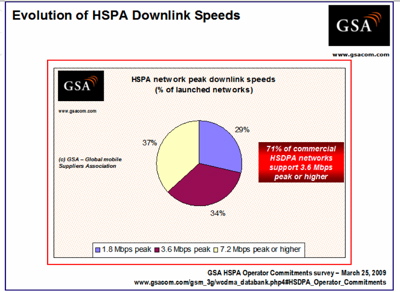By Tim Conneally, Betanews
One year ago, market research firm In-Stat released a study that established the average home broadband connection in the United States. The study found that the comparatively small number of residential fiber customers against the high number of narrowband customers amounted to a national downstream average of 3.8 Mbps. Several months later, Broadband Expert released similar research data for the UK, which found the average fixed line broadband speed was 3.61 Mbps.
Similarly, results from Analysis Mason's Fixed Broadband Research Program published this week find that nearly 60% of the broadband connected homes within the 30 OECD member nations are connecting via DSL, where only "a small proportion" can achieve speeds around 8 Mbps.
Due to mobile broadband's limited reach and frequent reliance upon slower 2G connections to flesh out coverage, Broadband Expert analyst Rob Webber predicted that it would take another three years before mobile broadband became the leading connection for consumers. But reports from the Global mobile Suppliers Association (GSA...do forgive the "m," it's gone mobile) this week claim that the baseline for 3G wireless communication speeds has been set, and it's 3.6 Mbps.
In the GSA's annual report to the 3rd Generation Partnership Project (PDF here), the group states that WCDMA (including HSPA) is the dominant 3G network protocol, with 286.9 million subscribers and a 71.8% global market share. The number of HSPA deployments has grown by more than 100% for the third year in a row, with 259 total networks against last year's 110.

The group now says 91% of WCDMA operators have an HSPA deployment of some type, with the majority (71%) offering speeds of 3.6 Mbps and above, and 37% offering a peak of 7.2 Mbps and higher. In total, there are 82.8 million HSPA subscribers worldwide.

The CDMA development group, meanwhile says that there are 271 1x EV-DO networks offering a peak downlink transmission speed of 3.1 Mbps.
So of 399.3 million 3G subscribers the GSA counts worldwide, 112.4 million have a peak of 3.1 Mbps with 1x EV-DO, 58.78 million subscribers have peaks of 3.6 Mbps and above with HSPA, 24.02 million have HSPA with a peak of 1.8 Mbps, and the rest of the 204.1 million WCDMA subscribers of various types have between 384 Kbps and 2 Mbps.
Copyright Betanews, Inc. 2009
